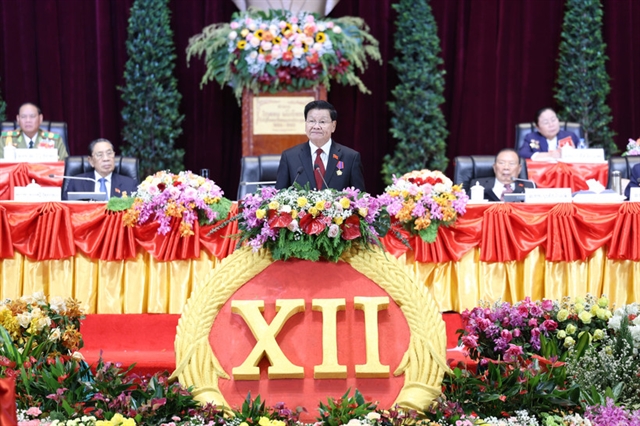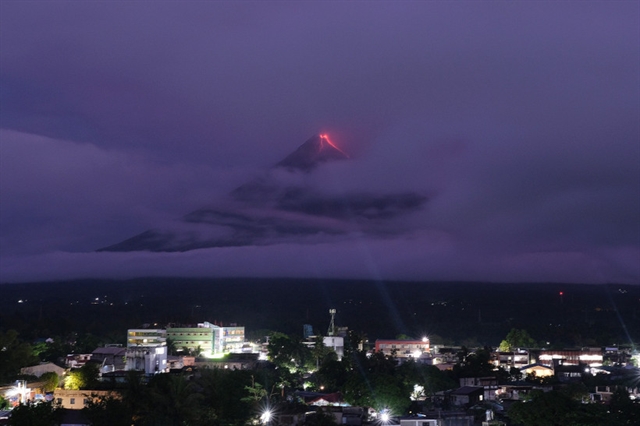 Features
Features

The defunct Thanh Chiêm Palace (1602-1883) is seen as a cradle of romanised Vietnamese script, and the place was linked with Portuguese missionary Francisco de Pina (1585-1625) – the founder of the modern writing system of the Vietnamese language – and then his student French missionary Alexandre de Rhodes (1591-1660).
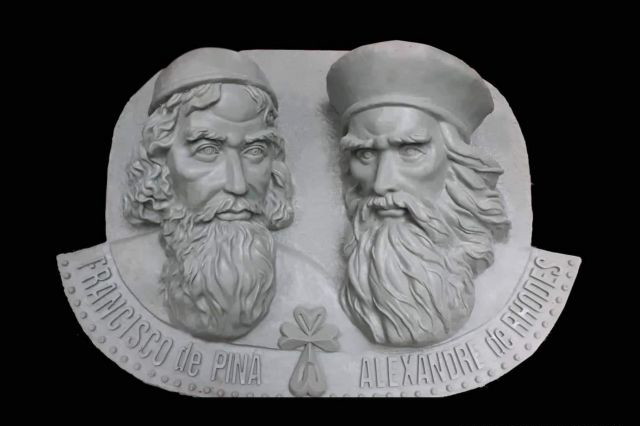
|
| PRIESTS AND SCHOLARS: The design of a sculpture of Francisco de Pina (left) and Alexandre De Rhodes, created by sculptor Phạm Văn Hạng. Photo courtesy of Phạm Văn Hạng |
By Công Thành
The defunct Thanh Chiêm Palace (1602-1883) is seen as a cradle of romanised Vietnamese script, and the place was linked with Portuguese missionary Francisco de Pina (1585-1625) – the founder of the modern writing system of the Vietnamese language – and then his student French missionary Alexandre de Rhodes (1591-1660).
While removing three ancient tombs at André Phú Yên Church last year in Điện Phương Commune, Điện Bàn Town, Quảng Nam Province, workers found European designed wooden coffins and big bones that would indicate burial 400 years ago.
The three tombs unveiled that missionary priests had been buried in the church’s graveyard.
Priest Joseph Nguyễn Thanh Tùng, who now manages André Phú Yên Church, said Jesuit priests were often laid to rest at the church when they passed away.
“Long and large bones were found in the well-preserved wooden coffins. These remains are believed to be from burials when the church was built around four centuries ago,” Tùng said.
He said one of ancient tombs was the resting place of Francisco de Pina – one of the first westerners who came to the country to teach Christianity, studied Vietnamese language and created the romanized Vietnamese script.
“The documents revealed priest Francisco de Pina had lived in the church for missionary work, and taught romanised Vietnamese script at the nearby Thanh Chiêm Palace,” he said.
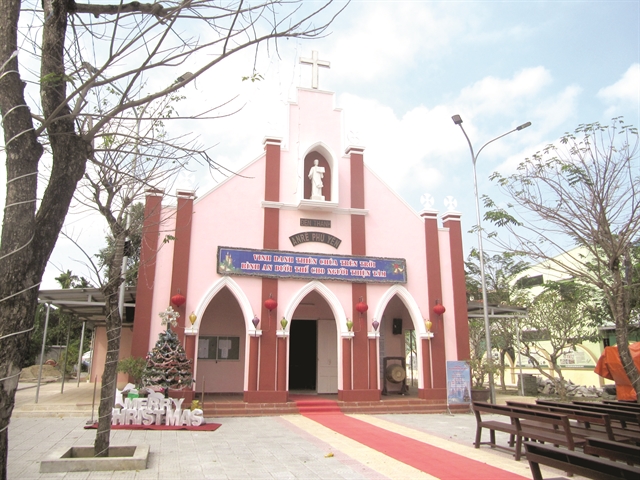
|
| HISTORIC: This church in Điện Phương Commune in Điện Bàn Town in Quảng Nam Province was a shelter of the priest Francisco de Pina and his assistants 400 years ago. VNS Photo Công Thành |
Pina’s creation
Professor Nguyễn Đăng Hưng from University of Liège, in Belgium, said Francisco de Pina had helped the romanisation of Vietnamese script to make missionary work easier.
He said de Pina was born in Guarada, a remote area in the north of Portugal, and joined the Jesuit order at the age of 19. The Portuguese was then sent to Hội An in 1617.
“He was the only western missionary who spoke Vietnamese fluently when he came to Hội An. He could preach to local people without an interpreter. The priest then settled the first school at Thanh Chiêm – a quiet and peaceful location – for teaching Vietnamese Romanised script and religious education in 1619,” Hưng said, adding the church and school was built in 1623.
He said the creation of the romanised Vietnamese script helped many Vietnamese people learn to read and write more easily.
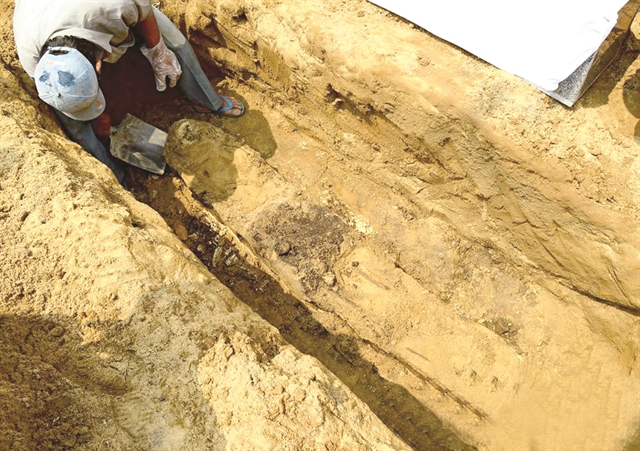
|
| TIME TEAM: A worker excavates a tomb at the Andre Phú Yên Church. Photo courtesy of André Phú Yên Church |
He said before that only 3 per cent of the Vietnamese population could write in Han Chinese script before Pina’s creation.
According to an old document, de Pina drowned in 1625 after a hurricane hit the sea off Hội An when he and his assistants were on board a small boat bringing documents to a larger Portuguese vessel.
Roland Jacques, professor from University of Saint Paul, Canada wrote in a report that de Pina drew up as of 1622 an ambitious plan to explore the Vietnamese language, and he decided to create the romanised script, with the help of educated young men and a number of linguistic tools.
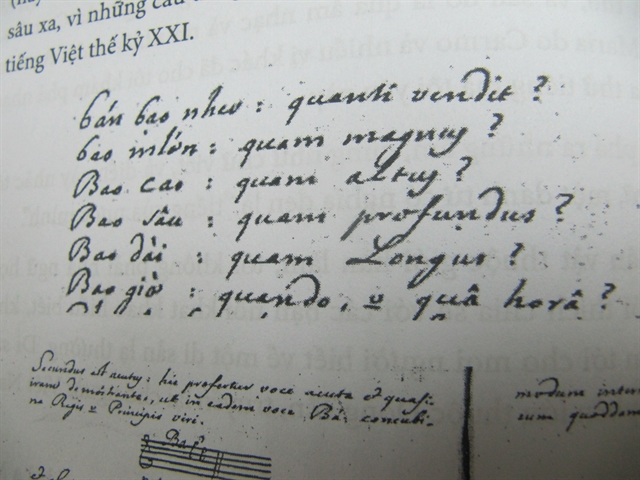
|
| BEGINNINGS: A document shows romanised Vietnamese scripts that Western missionaries created. Photo courtesy Nguyễn Thủy Tiên de Oliveira |
These tools would allow foreigners to master the language in its best form and entice the Vietnamese to develop their own language without depending upon the stiff Chinese model.
Jacques’ report also unveiled that one tool was the transcription of phonetics into a Latin-based sophisticated system: the script known today as ‘Chữ Quốc Ngữ’ (national romanised Vietnamese script).
Jacques said after the premature death of de Pina in 1625, a number of his disciples took over his plan and worked to realise it.
“We know only the names of European scholars, principally Gaspar do Amaral, Antonio Barbosa and Alexandre de Rhodes. The Vietnamese young men trained by de Pina faded into the background, except a few mentioned into the book of de Rhodes in connection with the Christian mission,” he said.
“I would mention just one of them, a confirmed literato that de Rhodes asked to train younger recruits in the ideographic script, we only know his Christian name Inacio.”

|
| PLACE OF LEARNING: A painting of Thanh Chiêm Palace. It was a school were the priest Francisco de Pina educated on Vietnamese and Vietnamese Romanised scripts. Photo courtesy of Điện Bàn Town People's Committee |
Prof Hưng, who was born in Điện Bàn Town and has lived in Belgium from 1960, said de Pina compiled dictionaries in Portuguese-Vietnamese and Vietnamese-Portuguese, while de Rhodes came to study Vietnamese at school under de Pina.
He stressed that de Rhodes learnt Vietnamese from de Pina and then updated the Vietnamese language from localities in the north of Việt Nam.
De Rhodes’ completion
De Rhodes then completed a Portuguese-Vietnamese-Latin dictionary that used material from de Pina’s dictionary, which helped make it possible to translate Vietnamese into Russian, French, Italian and Japanese, Hưng said.
According to Jacques, the dictionary finally came to light in 1651 under the name of Alexandre de Rhodes, but the publication happened in Rome.
He said a number of copies were probably sent to Macau, mainland China, where the college included a few Vietnamese students, but it is unclear whether and when copies of the dictionary came into Việt Nam.
He added the publication of the 1651 dictionary has been widely celebrated as a huge step forward in the modern development of the Vietnamese language.
Dr Nguyễn Thủy Tiên de Oliveira, from the Portugal-Việt Nam Friendship Association, said Chữ quốc ngữ was seen as a precious treasure created by Jesuit priests in the 17th century.
She said some Vietnamese intonation marks were transcribed into musical notes by de Pina with support from Vietnamese men.
De Oliveira described in a report that de Rhodes had said: ”Vietnamese women speak like birds singing,” while de Pina said: "The Vietnamese language was made by different tones like vocalisation, and it needs to tune musical notes before learning the alphabet.”
Châu Yến Loan, a researcher from HCM City, said Chữ quốc ngữ was created in the 17th century and completed in the 18th century.
She said for 300 years, Chữ quốc ngữ was widely taught at schools in Việt Nam, and King Khải Định decided to drop examinations in Han Chinese in 1918 before modernist scholars Phan Châu Trinh, Huỳnh Thúc Kháng and Trần Quý Cáp promoted the process of studying the romanised Vietnamese script.
Vice chairman of Điện Bàn Town Nguyễn Xuân Hà said the first school of romanised Vietnamese script under priest de Pina was built in the area of today's Nguyễn Du Primary School in Điện Phương Commune.
Hà said artefacts and ceramic jars and fragments found in 1990s excavations also proved the existence of the old palace.
He said Quảng Nam Province had started the construction of a memorial park in honour the creation of romanised Vietnamese script in Điện Phương Commune.
The province plans to promote the park as a national relic as a site for young generations to understand the history and development of the romanised Vietnamese script, as well as honour the contribution of western priests and Vietnamese scholars. VNS

